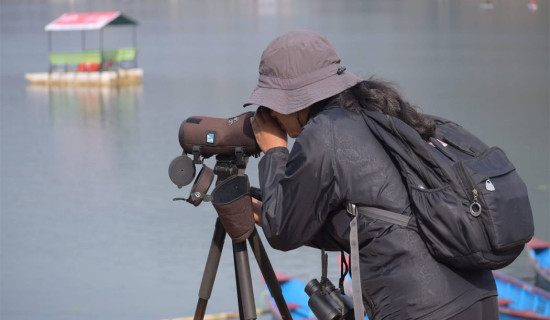- Wednesday, 14 January 2026
A Humble Presentation Of Self
Everyone has a story to tell – of a life lived, hurdles overcome and experiences gained. And many find an outlet to share these stories with the world through autobiographies. But, with all due respect to everyone involved, it is rare to find biographies that are totally sincere, that do not include embellished drama and hyperbolised conflicts and that do not present a narrative that places their central character at the centre of every
important event that occurred during their lifetime. Again, without casting any doubt on the amazing lives lived and taking anything away from the fantastic accounts written about them, biographies tend to ‘Forrest Gump’ the people they
revolve around.
This is why ‘The Journey of Hope and Global Humanitarianism’ is such a breath of fresh air. It is sincere. It does not overblow its author Krishna KC. He has not saved the world from an alien invasion and foiled a plan to assassinate the pope.
He is a human who has led a very human life. He is not a superhero using his superpowers to end world hunger. He is a man doing the things required of him in his job and using the resources at his disposal to help the community the best he can.
Does this make for an interesting read? On paper, it should not. There is no ‘hero’s journey’, no obstacles to conquer, no fights to fight and no elements we traditionally associate with a progressing plot.
Yet ‘Journey’ is, precisely because it has none of those. It simply presents what KC did and by doing so, shows what anyone can do.
Because KC does not exaggerate his accomplishments, he becomes relatable to the reader. His sincerity makes the book immersive.
‘Journey’ is a book about a Nepali man – KC – who entered a career in international development and spent it trying to secure the rights of some of the most marginalised and impoverished communities in the world. Through this career, he got to witness the work ‘humanitarian’ agencies are doing in places worldwide and now, through his book, he shares what he saw with us. He gives us a behind-the-scenes look at the development agencies that, at least here in Nepal, often appear to be out of reach of the general public.
This book gives the reader access to the world of the so-called “humanitarian work” carried out by international non-government organisations. By doing so, it offers insights for people wishing to enter the field and develop a career. Oftentimes, international development is portrayed as wizardry, of magician-like individuals entering a country and solving all its problems. This book, whether the writer consciously intended to or not, dispels that myth and shows that INGO-work, as it’s called in Nepal, is just a bunch of people trying to do the best they can while learning on the job.
It is complex, yes, but it is not something we should be intimidated by and if we have a passion for it, we should start applying. There are opportunities.
This tome is also useful for those who have already entered the global aid system because it shows how they can utilise their positions to make a difference, how they can make quick decisions and, perhaps most importantly, how they can ensure their personal safety and the safety of people they are there to help.
Regarding technicalities, the book’s title “The Journey of Global Hope and Global Humanitarianism: Creating Paths and Building Foundations for Literacy and Education Worldwide” is quite a mouthful. Books, especially ones with autobiographical elements like this one, need to have catchy titles. They need to be words or phrases that evoke vivid imagery and tease the imagination. This, sadly, fails to do that.
Readers who are not interested in the humanitarian activities of global INGOs may also find themselves having to read some lines or paragraphs multiple times to get their meaning.
It is not because the language is difficult, far from it. Anyone with a basic grasp of English can understand this book, which is one of its greatest strengths.
But a major weakness is that it gets so specific about writer KC’s experiences, particularly in chapters 5, 6 and 7, that lay readers, like this reviewer, are not able to comprehend what is being told. Save for these two complaints, the book is an easy read. As mentioned, it does not use big words that only serve to flaunt the vocabulary of the writer. It is also not an ego trip that deifies its scribe and subject Krishna KC.
He is not an immaculate man with the Midas touch. He is a regular person doing regular things, albeit in irregular circumstances.
The book is also, in a way, a travelogue, documenting a Nepali’s journey to different countries of the globe and presenting his perception and perceptions of him by others.














